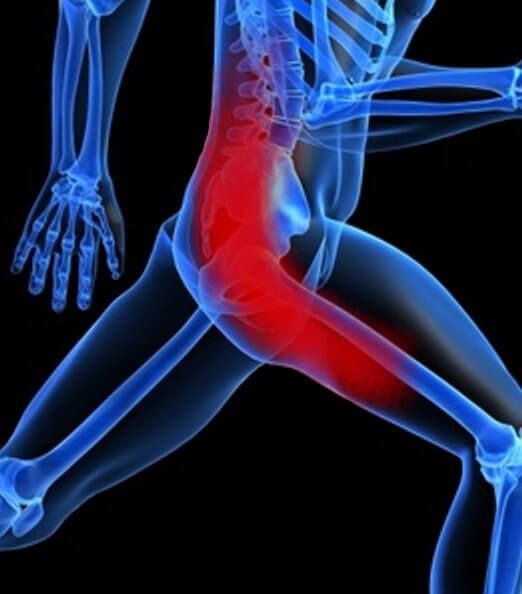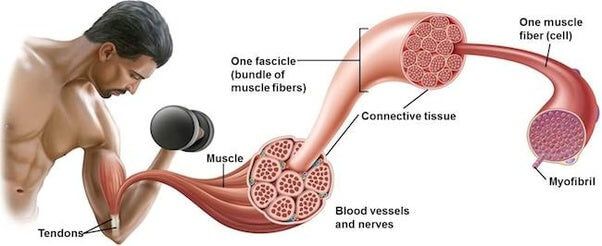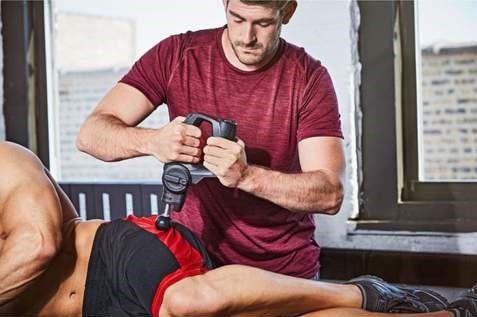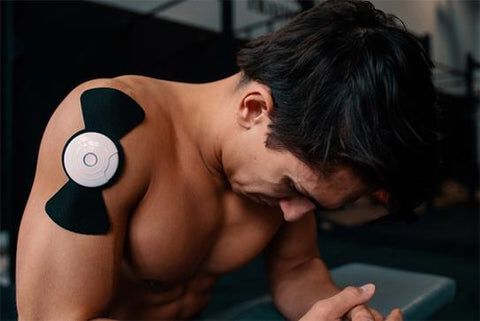Everyone has experienced DOMS at some point in their life. Whether it’s a first time workout, new activity, or simply getting tossed around in the waves at the beach; everyone has felt that muscle soreness the next day. Although debilitating at times, post-activity muscle soreness tends to be more mild and slightly uncomfortable. But, why? How can you feel so sore after barely exhausting yourself the day(s) before? Just as practice makes perfect with most things in life, your muscles need to naturally ‘practice’ or adapt to a stressor in order to perfect its energy efficiency, as well as prevent injury and soreness.
What is It?

DOMS, or delayed-onset muscle soreness is that sore, aching, painful feeling in the muscles after unfamiliar exercises or movements. Additionally, impairments in range of motion and strength may also be seen in individuals post-activity. Effects generally develop within the first 6-8 hours after activity and peak within 48 hours. Depending on the intensity, volume, and familiarity with the activity; DOMS can last up to 72 hours.¹ ² ³ The duration and intensity of symptoms are highly variable from person to person. Activity level, pain tolerance, nutrition, genetics, and training age are just a few factors affecting the intensity of DOMS.
Physiology
During physical activity, muscle fibers and motor units are recruited to endure the load and carry out the motion. Recruiting more muscle fibers is an adaptation of training that leads to less soreness, however initially fewer muscle fibers have to endure the load of the movement and tend to strain easier and quicker. High loads and prolonged tension are stressors found to cause microtraumas in the muscle that result in inflammation and acute pain as a result of the micro-tears that develop in the muscle. ‘Guarding’ also contributes to the effects of DOMS by limiting range of motion.⁴ Naturally, the brain will tell the muscles to tense up and limit its motion in order to protect the muscle from further damage while healing. Although science has yet to find direct causation of DOMS; microtrauma, among other factors, is believed to be a leading cause of DOMS as a result of unfamiliar movement or exercise.⁵ ⁶

This conclusion can be observed through eccentric training. Eccentric movements -- active lengthening of the muscle -- are found to be more associated with DOMS than concentric movements -- active shortening of a muscle.⁷ To put this into perspective, imagine pulling on a tightened rope with excessive force. Similar to the rope, muscle fibers will tear and break under a load that it cannot handle. Furthermore, eccentric contractions recruit fewer motor units; resulting in a smaller area of distribution of the weight and ultimately more stress on the muscle. However, muscles will work to improve efficiency in handling this load over time; thus, leading to less damage and soreness in the days following.
It Gets Better
DOMS is good because it signals a positive training effect. A muscle will repair bigger and stronger in effort to adapt to an unknown stressor and make it easier to handle that stressor in the future. That being said, everyone will experience DOMS at some point, but the severity eases up with training and repetition. In fact, the foundation of progression in exercise programming involves switching up exercises, volume, and intensity for the purpose of ‘shocking’ the muscle into that adaptation effect. In sports, triggering adaptation in the offseason helps to prevent intensity and duration of DOMS during in season competition. However, soreness cannot always be predicted, which is why furthering research, modalities, and tools are ever evolving in the recovery industry.
Treatment and Recovery
DOMS will naturally subside over time with rest, but certain circumstances don’t allow someone to wait 72 hours before feeling 100 percent. Competition sports like basketball, baseball, hockey, and more require a player to play games back to back; which fuels the need for a speedy recovery. Additionally, beginners are more likely to drop off their fitness routine after experiencing the intense effects of DOMS. Aside from coaches and trainers monitoring volume to reduce exhaustion, the exercise and sport field has begun to research new modalities, techniques, and tools to combat these effects. Currently, there are many options available to help with recovery. Techniques range from light massage to pajamas emitting infrared heat. Although some more research than others, what it ultimately comes down to is which modality eases the symptoms of the patient. Everyone responds differently, but some recovery techniques are better supported by evidence than others. Evolving from traditional stretching, here are some of the most popular recover options.
-
Massage/Percussion/Scraping - massage is generally used to help ease inflammation and soreness, while improving range of motion and blood flow.⁸ ⁹ New and popular technology has allowed a person to reap the benefits of a 30 minute massage in a short period of time without assistance.
-
Heat/Heat Topicals - Opens up blood vessels and allows increased blood flow to get oxygen and nutrients for healing muscles¹⁰
-
Supplementation
- Protein - Aids in muscle protein synthesis that rebuilds and repairs the muscle
- Fish Oil/Omega-3 - Reduces inflammation and provides full body benefits¹¹
- Curcumin - A study in 2015 showed some promising effects in reducing inflammation and pain in participants with high levels of soreness¹²
-
Sleep - The body recovers when sleeping. Inadequate sleep has been associated with reductions in performance and an increase in pain¹³

 Regardless of how you choose to recover, it is important to note that DOMS should not be feared. The body will naturally heal itself. As mentioned previously, DOMS can be a positive indicator of an effective workout. Ultimately, the response and results from different modalities may vary from person to person. Make sure to test which method works best for you, meaning you feel like symptoms are improving. If DOMS does not subside or pain increases over time, be sure to consult a doctor for further diagnosis. In some cases, lingering symptoms or brown/bloody urine may be an indicator of rhabdomyolysis -- a medical emergency in which the muscle’s content is released into the bloodstream.
Regardless of how you choose to recover, it is important to note that DOMS should not be feared. The body will naturally heal itself. As mentioned previously, DOMS can be a positive indicator of an effective workout. Ultimately, the response and results from different modalities may vary from person to person. Make sure to test which method works best for you, meaning you feel like symptoms are improving. If DOMS does not subside or pain increases over time, be sure to consult a doctor for further diagnosis. In some cases, lingering symptoms or brown/bloody urine may be an indicator of rhabdomyolysis -- a medical emergency in which the muscle’s content is released into the bloodstream.


